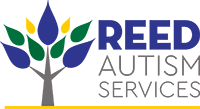Autism Resources
Terms Every Parent of a Child With Autism Must Know
When your child is diagnosed with autism, it might suddenly seem like doctors and clinicians are speaking another language. Once you know what these common acronyms and phrases mean, you’ll be fluent, too.
Assessments: A range of techniques and tools designed to provide information on various aspects of an individual’s performance and functioning. Assessments that may be used with individuals with autism may include (but are not limited to)
- Diagnostic – designed to help develop a diagnosis and severity indicator of autism
- Autism Diagnosis Interview – Revised (ADI-R)
- Autism Diagnostic Observation Schedule, Second Edition (ADOS-2)
- Childhood Autism Rating Scale, Second Edition (CARS-2)
- Gilliam Autism Rating Scale – Third Edition (GARS-3)
- Educational – designed to provide a comprehensive overview of a student’s performance in a variety of relevant educational domains and assist with developing goals and objectives
- Verbal Behavior Milestones Assessment and Placement Program (VB-MAPP),
- Assessment of Basic Language and Learning Skills-Revised (ABLLS-R)
- Promoting Emergence of Advanced Knowledge (PEAK)
- Functional Independence Skills Handbook (FISH)
- Assessment of Functional Living Skills (AFLS)
- Adaptive – designed to provide a “total picture” of an individual by assessing several broad domains.
- Vineland Adaptive Behavior Scales (Vineland-2)
- School-Function Assessment (SFA)
Autism or Autism Spectrum Disorder (ASD): A neurodevelopmental disorder characterized by challenges with communication/social engagement and restricted/repetitive behaviors. Previously, ASD included a range of conditions that you may have heard of including: autistic disorder, childhood disintegrative disorder, pervasive developmental disorder-not otherwise specified (PDD-NOS) and Asperger syndrome.
Applied Behavior Analysis (ABA): A scientific approach to understanding why people do what they do and helping them make meaningful changes in their behavior. ABA is recognized as an effective treatment for autism spectrum disorder by the U.S. Surgeon General, American Academy of Pediatrics and the National Institute of Mental Health.
Board Certified Behavior Analyst (BCBA): A professional who has completed graduate-level coursework in ABA, has completed hundreds of hours of supervised practice, and has passed a competency examination. BCBAs are responsible for educational programming (assessment and sequencing of skills) and behavior support (performing functional behavior assessments and developing implemented function-based behavior intervention plans).
Behavior Intervention Plan (BIP): When a student with a disability is exhibiting persistent behaviors that impede his/her learning or that of others, or their behavior puts them or another student in harm’s way, a BIP plan is created based on the results of a functional behavioral assessment (FBA). It includes a description of the problem behavior, hypotheses as to why the problem behavior occurs, and intervention strategies that include antecedent strategies (proactive), replacement skills, and consequence strategies (reactive) to address the behavior.
Diagnostic and Statistical Manual of Mental Disorders, fifth edition (DSM-5 or DSM-V): The standard reference manual used by healthcare providers to diagnose mental and behavioral conditions, including autism.
Early Intervention (EI): The term used to describe the publicly, privately, and insurance-funded services and supports that are available in every state and territory to babies and young children with developmental delays and disabilities and their families.
Functional Behavior Assessment (FBA): A systematic process that is designed to identify behavior of concern that are either dangerous, socially stigmatizing, or interfering with the educational process and to determine why the behaviors are persisting (i.e., what maintains the behavior). Ultimately, the goal of an FBA is to identify one or more of the functions that maintain behavior so that a comprehensive behavior intervention plan can be developed (see BIP).
Individuals with Disabilities Education Act (IDEA): A nationwide law that mandates a free and appropriate public education to children with disabilities. It governs how states and public agencies provide early intervention and special education services to children with disabilities.
Individualized Education Program (IEP): A document outlining an individualized education plan for a child ages 3-21, based on their unique needs. IEPs are written with input from parents, teachers, case managers, other support professionals, and sometimes the child themselves.
Least Restrictive Environment (LRE): A legal requirement under federal law that students with disabilities receive their education, to the greatest extent possible, with nondisabled peers, and not be removed from general education classes unless education in these environments cannot be achieved satisfactorily. Because “least restrictive environment” is a relative term, for some individuals, their least restrictive environment where they can achieve a satisfactory education is a separate school that may or may not have access to nondisabled peers.
Free Appropriate Public Education (FAPE): All school aged children with disabilities within the jurisdiction of a school district that receives funds from the Department of Education are entitled to a free and appropriate public education, which may consist of education in general education classes, education in general education classes with the use of aids and services, or if necessary, special education and related services in separate classrooms for all or portions of the school day.
Present Level of Academic Achievement and Functional Performance (PLAAFP): The first written statement of a child’s ability and current achievement included in the IEP documentation. The PLAAFP describes the student’s performance within the general education curriculum and includes: the impact of the disability; academic strengths; academic need/weaknesses; functional abilities and needs.
Special Education Related Services: Services that may be required to assist a child with a disability to benefit from a free and appropriate public education. These services can include: transportation, speech-language pathology and audiology services, interpreting services, psychological services, physical and occupational therapy, recreation, including therapeutic recreation, social work services, school nurse services that enable a child with a disability to receive a public education as described in his/her IEP, counseling services (including rehabilitation counseling, orientation, and mobility services), and medical services for diagnostic and evaluation purposes only. Educational programs individualize the amount and type of service that a child receives based on need and ability to achieve IEP goals and objectives.

